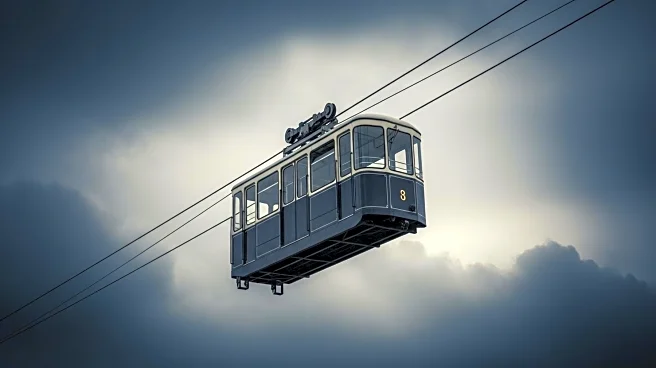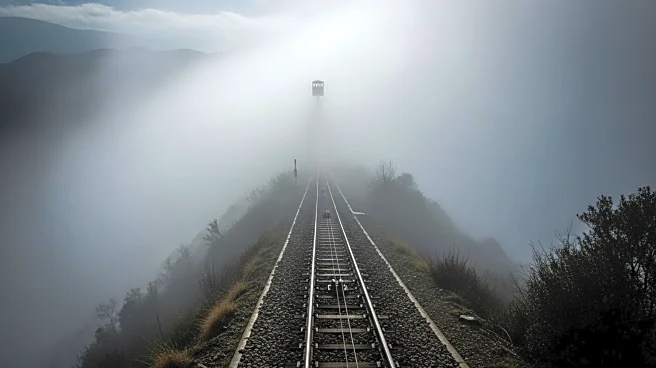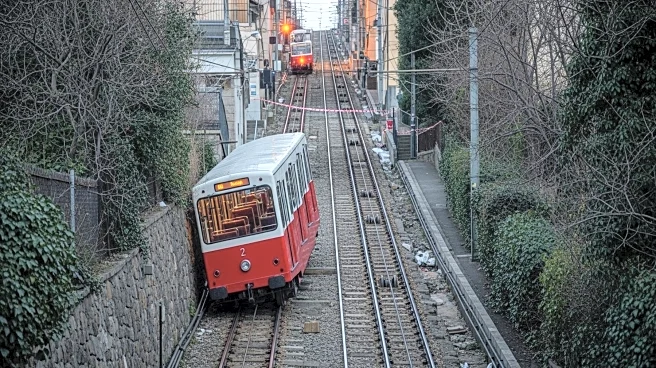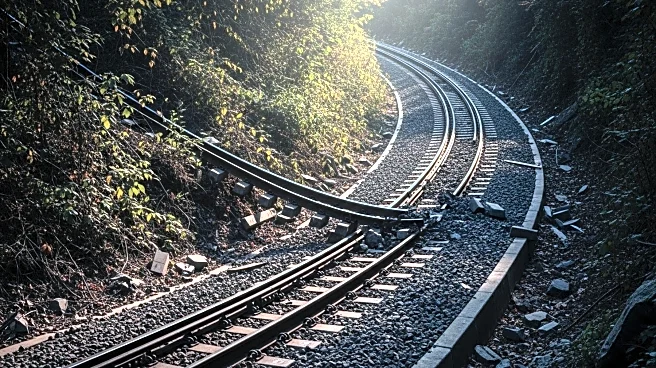What's Happening?
Portuguese authorities have released a preliminary report on the deadly funicular crash in Lisbon, which killed 16 people. The report indicates that the cable connecting the two cars of the Elevador da Glória funicular disconnected at its attachment point on the upper car. Despite the application of two braking systems, the car descended rapidly and crashed at a speed of 60 kilometers per hour. The report notes that the brakes alone were insufficient to stop the car without the support of the connecting cable. Investigators are examining the cable failure and other factors to understand the cause of the accident. A further preliminary report is expected within 45 days.
Why It's Important?
The report sheds light on the technical aspects of the accident, emphasizing the importance of cable integrity in funicular operations. The incident raises questions about the adequacy of safety measures and maintenance protocols for public transportation systems. The crash has significant implications for tourism in Lisbon, as the Elevador da Glória is a popular attraction. The findings may lead to changes in safety standards and regulations for funiculars, aiming to prevent similar accidents and enhance passenger safety. The report's conclusions could influence transportation policies and practices across Europe.
What's Next?
Investigators will continue to examine the wreckage and assess the factors contributing to the cable failure. The Portuguese aviation and rail accident investigative agency is expected to release another preliminary report within 45 days, which may provide further insights into the accident. The findings could lead to recommendations for improving safety measures and maintenance protocols for funiculars. Authorities may consider implementing stricter regulations and inspections to ensure the safety of public transportation systems. The incident may prompt discussions on modernizing older infrastructure to prevent future accidents.











